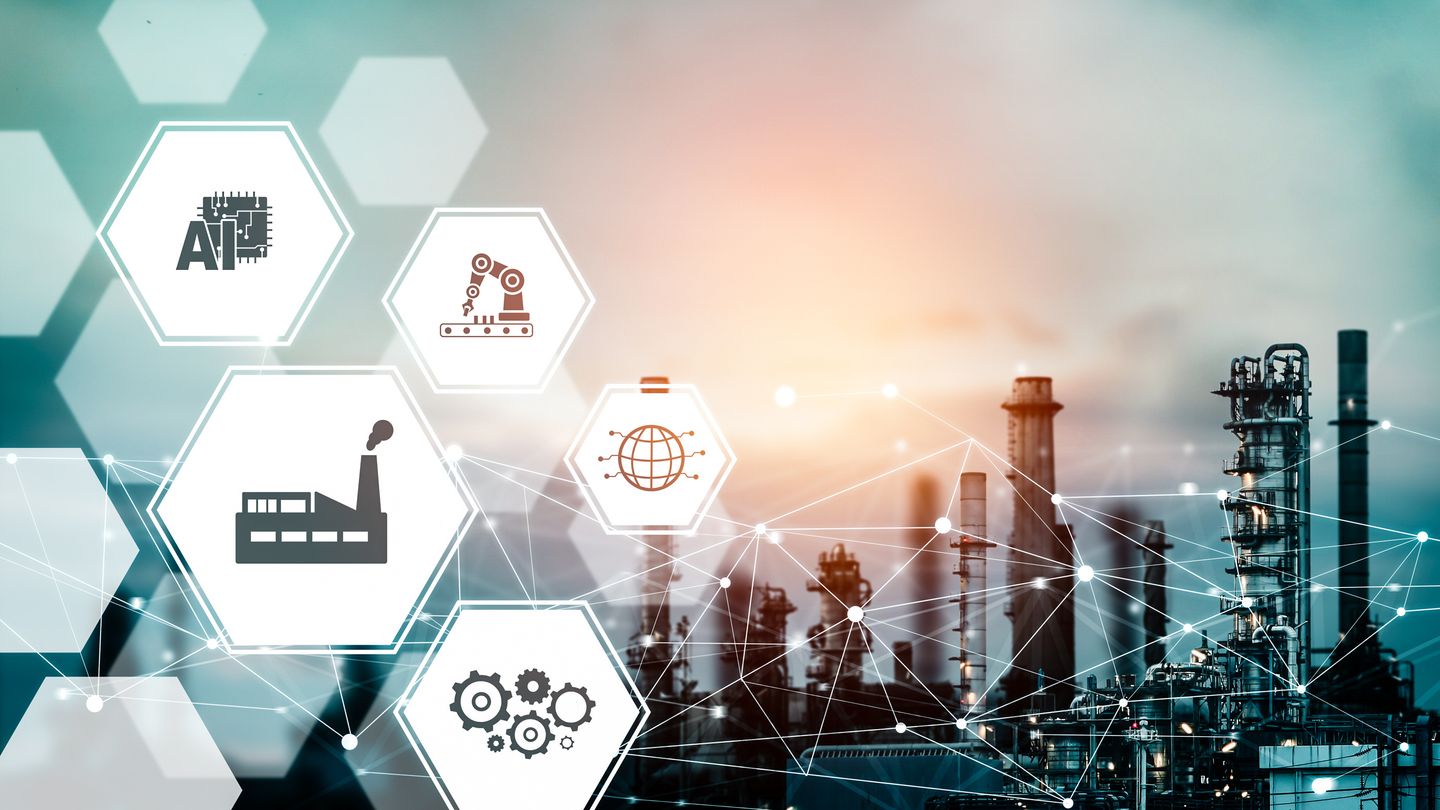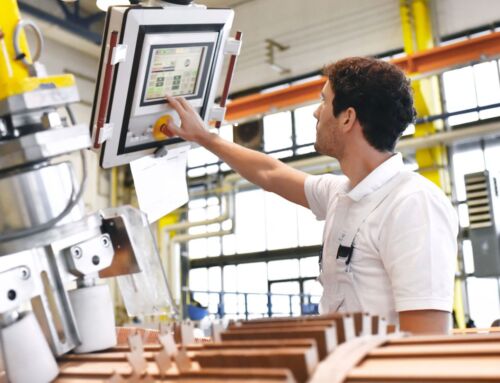The COVID-19 pandemic forced businesses early on to halt production, cut costs, and trim their workforce. Manufacturing indicators had suggested early 2020 progress, but US industrial output descended 4.5 percent month over month in March 2020, followed by a further 11.2 percent drop in April.
However, during the COVID-19 outbreak, the usage of Industrial Internet of Things (IIoT) devices has only grown. IIoT has helped firms achieve operational efficiency via automated processes, shortened costs, and ready-made technologies. Organizations moved quickly toward Industry 4.0, which refers to the continuous automation of conventional manufacturing and industrial processes.
Industrial IoT is expected to become a massive, rising market with a transformative impact across a wide range of industries in the new era of digitalization. These industries include manufacturing, transportation, logistics, oil, gas, building management systems, medical healthcare, energy and utilities, and many others. In light of the anticipated growth in the IIoT market from $77.3 billion in 2020 to $110.6 billion by 2025, 73 percent of manufacturers want to boost their investment in smart factory technologies over the following year.
So, what IIoT trends will emerge as a result of these advancements in 2021 that will be prevalent in 2022? Ascendle expects greater adoption of the IIoT in the coming year, as manufacturing, utility, healthcare, and other organizations become more aware that they can help their previously siloed industrial assets communicate by utilizing AI integrated into new IIoT solutions.
1. Optimize Operational Resilience via Automation
In 2020, the manufacturing industry took a significant blow. The industries in the ten most impacted states in the United States saw a revenue loss of USD 400 billion. Further, prolonged closure may have driven a deeper impact on the availability of regular supplies. Thus, many industries have begun to embrace IIoT applications to navigate this thin line. Why? Well, it improves operating efficiency by limiting the amount of time employees are required to be present near equipment. As a result, the reduced amount of human activity on the floor guarantees the ability to social distance when needed and reduces the chance of virus transmission.
Even if there was no COVID threat, the IIoT was set to grow in 2021. The worldwide IIoT market was already projected to expand at a compound annual growth rate (CAGR) of 22.4 percent by 2027, reaching a value of 885.1 billion USD.
Also, manufacturers may save up to 30-40 percent on equipment maintenance expenses using remote technology deployments. Therefore, we predict a continuous increase in demand for expertise in industrial installations due to the IIoT. Moreover, many IIoT initiatives will become crucial industrial unit deployments.
2. Predictive and Preventative Maintenance
For manufacturers that want to increase productivity at their facilities, predictive maintenance is an efficient way of doing so. The IIoT can update equipment rapidly. The ability to deliver upgrades simultaneously may also help to minimize downtime, production delays, and idle hours on the job.
Fortunately, it is now possible to monitor how long a piece of equipment has been operating and even detect problems. IIoT-enabled devices can be used to monitor equipment so that any issues that could cause a shutdown can be addressed. The temperature sensors on a robot may warn when an essential component is about to fail. Additionally, the robot may initiate maintenance to reorder a new component via the Internet of Things (IoT), thus avoiding needless maintenance and downtime.
3. Transition to the Edge
Without question, the ability to react quickly will be essential in 2021 and 2022. To illustrate, Cobots, or collaborative robots, need the development of manufacturers who are better able to react to changing circumstances since cobots make complicated choices in real-time while doing the job on which they collaborate with people.
For organizations that want to increase resiliency while future-proofing their businesses, computer processing power and data storage must be moved to the “edge,” or closer to the point at which data is being generated. Why is this crucial? Because edge computing helps to decrease latency while increasing processing speed. Moreover, edge computing facilitates more agile and efficient manufacturing.
4. Expect an Increase in Cybersecurity Spending
The Internet of Things (IoT), like all other wonderful things on the web, is susceptible to persistent cyberthreats, and there is no exception. The IoT is an enticing ecosystem for cybercriminals that offers various ways to connect to a network and massive amounts of data. In 2019, 90 percent of customers expressed a lack of trust in IoT networks. Also, over 100 million breaches on IoT endpoints were executed in the same year.
Hence, cybersecurity is essential when it comes to the IIoT since the consequences go well beyond financial and brand harm. Millions of linked gadgets, both on the floor and outside the building, are at risk with an ever-expanding attack surface. Also, many IIoT networks have direct access to enterprise resource planning systems, including a wealth of sensitive information, even company trade secrets. Any large-scale cyberattack will produce formidable consequences.
Therefore, ongoing vulnerability monitoring, secure configuration, and third-party examination of security logs fall on the shoulders of manufacturing units. It’s not a matter of if IIoT networks will be attacked; it’s a matter of when and how expansive. Thus, increased spending in cybersecurity is no longer a choice.
5. Data-Driven Prognostic Technologies
Without question, a manufacturer’s bottom line suffers when unexpected downtime occurs, as it does every time. It also threatens deadlines and harms the life duration of equipment and the quality of the final product.
Significant IIoT breakthroughs were made in 2021 due to technological advancements such as improved sensors and communications systems that bring tracking closer to real-time than ever before. These advancements are most visible in predictive maintenance, enabling manufacturers to detect possible issues early, arrange downtime when it is most practical, guarantee that parts and people are ready for use, and keep operations flowing as planned.
6. Wireless Accessibility
It is not enough to just link devices for the IIoT to function. Wireless connections embedded in industrial equipment and data centers make the IIoT a reality. Consider what it would be like to install new wiring across an entire plant building for each item. Tripping over convoluted wiring is feasible in a production environment that is constantly changing.
However, wireless networking technologies are being developed from the bottom up to provide the required speeds. Today’s IIoT devices can benefit from 5G connection and enhanced Wi-Fi standards, which increase their capacity, bandwidth, and power efficiency.
7. Sentient Artificial Intelligence
Remote work will continue to be popular in 2022, as will the need for social distancing. In addition, the ongoing pandemic will continue to expose supply lines to upheaval. What does this imply? Indeed, businesses must develop innovative methods to function efficiently, from the product through to the manufacturing facility and finally, the customer.
Unquestionably, artificial intelligence will be the norm for solving these problems. Is AI perfect? In a few words, not without thoughtful guidance. Thus, it’s crucial for businesses to understand how people engage with and utilize these new autonomous systems while developing their AI strategies. Many industries have already implemented human-based AI in 2021. Yet, the right approach starts by first identifying user requirements and values and then adjusting AI designs and models to meet those needs and values. This, in turn, will boost acceptance.
8. Gadget Inclusion
Employees in industrial environments are increasingly using wearable gadgets as vital tools to improve their productivity and efficiency. When industrial employees do strenuous and repetitive activities, exoskeletons protect and assist them, thus improving total productivity. In addition, wearables outfitted with sensors may be used to provide temperature readings or to detect high-traffic areas on the work floor, among other things.
Moreover, industrial organizations can maximize employee safety during the pandemic as a result of this provision. How does the trend look for 2022? Gadget integration encompasses a wide range of technologies and is steadily gaining momentum as one of the most vital trends in the industrial environment.
To Summarize
Undoubtedly, businesses must embrace automation via smart devices across all endpoints to succeed in the future. In addition to paving the path for the next generation of industrial automation, a growing interest in sophisticated robotics and automation platforms is increasing factory efficiency and productivity.
Invariably, a massive volume of data exists, and the IoT provides the route for streamlining it in a secure but visible way. Recognizing new avenues and developing technology to incorporate into your company’s operations as soon as possible can go a long way toward obtaining a competitive edge.
To quickly and thoroughly explore critical IIoT technologies vital to your organization, don’t hesitate to contact us today!






